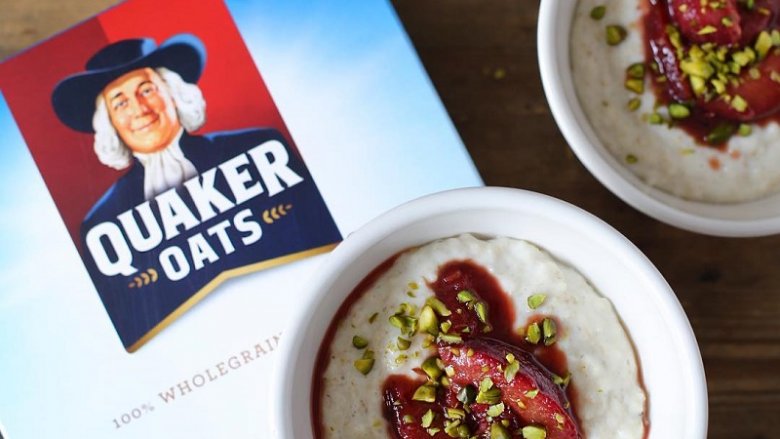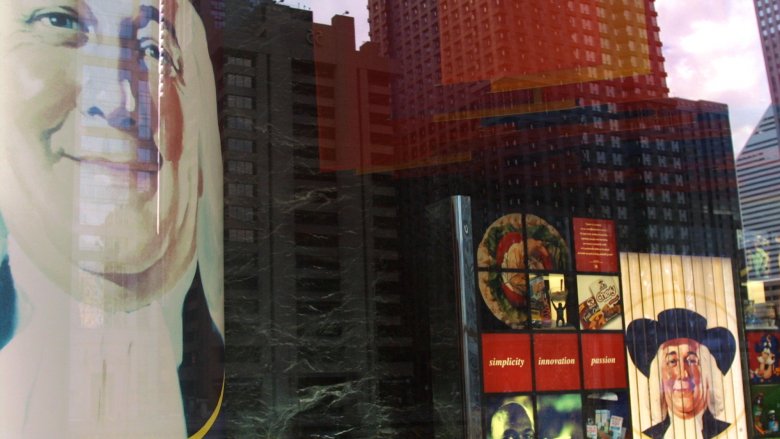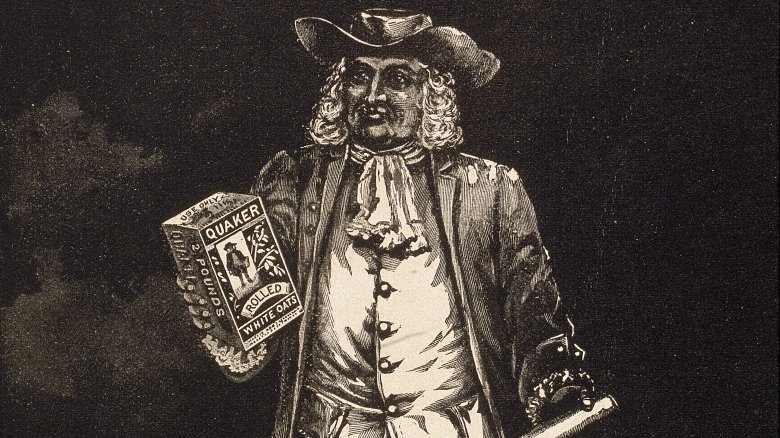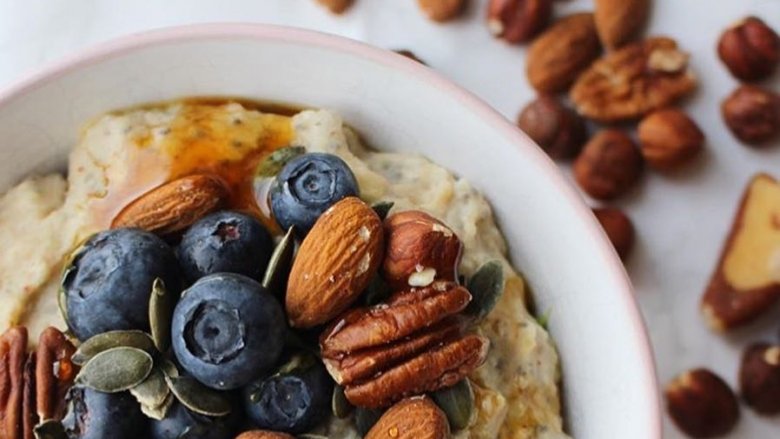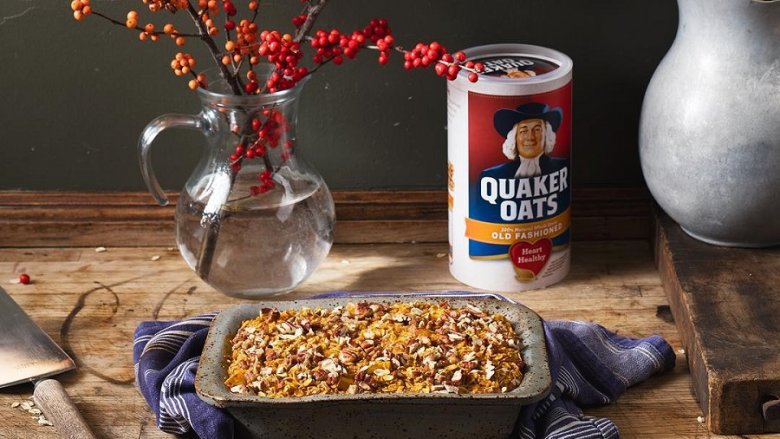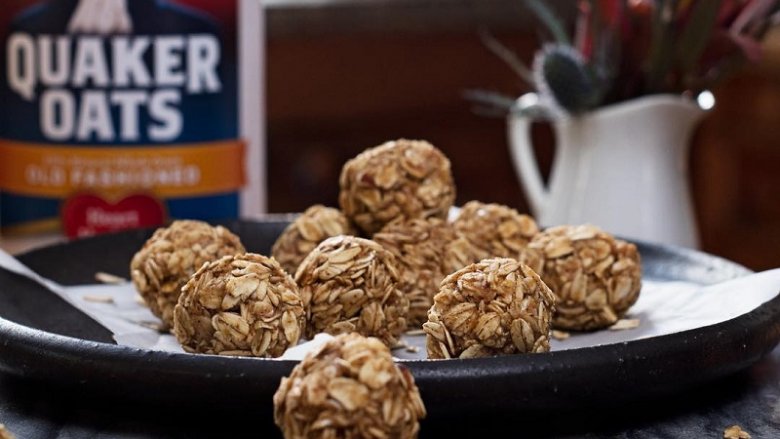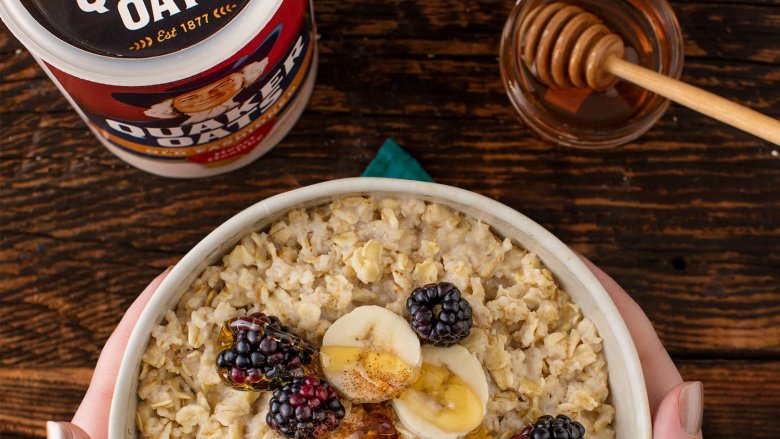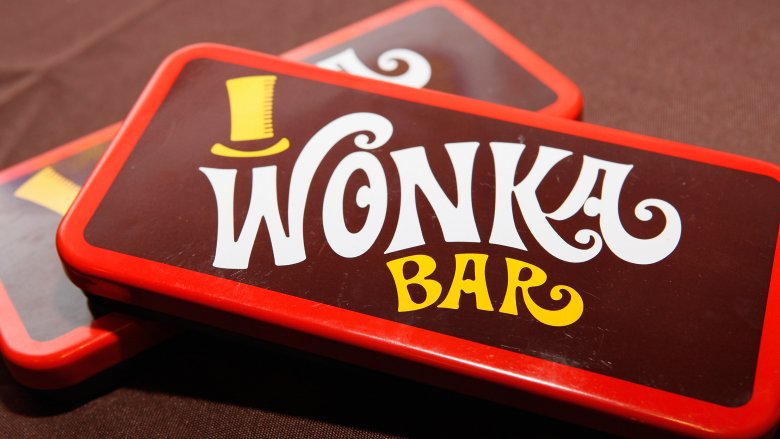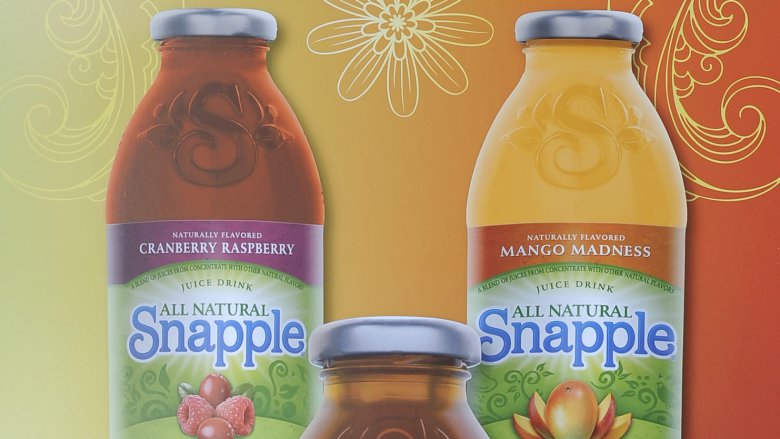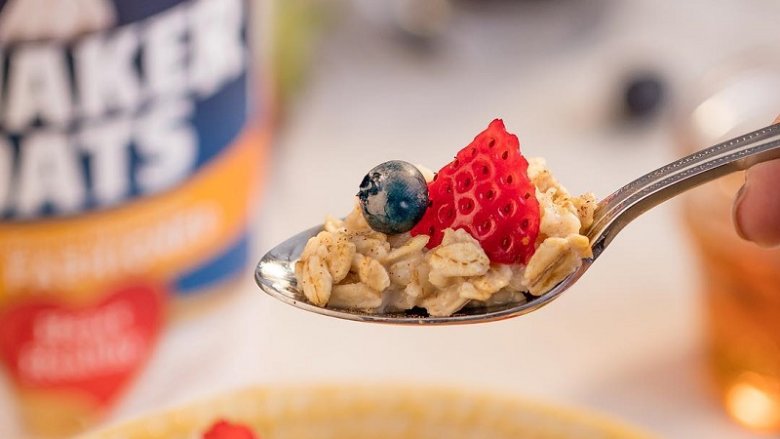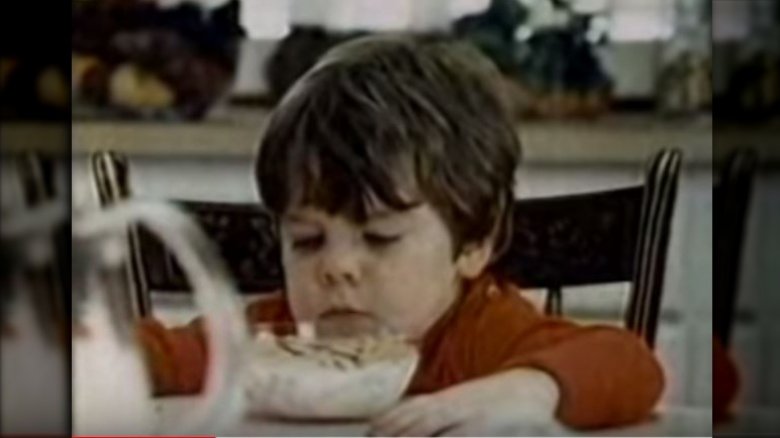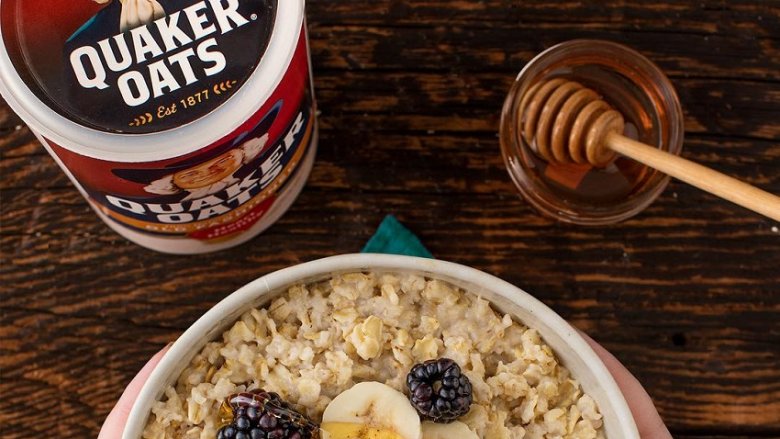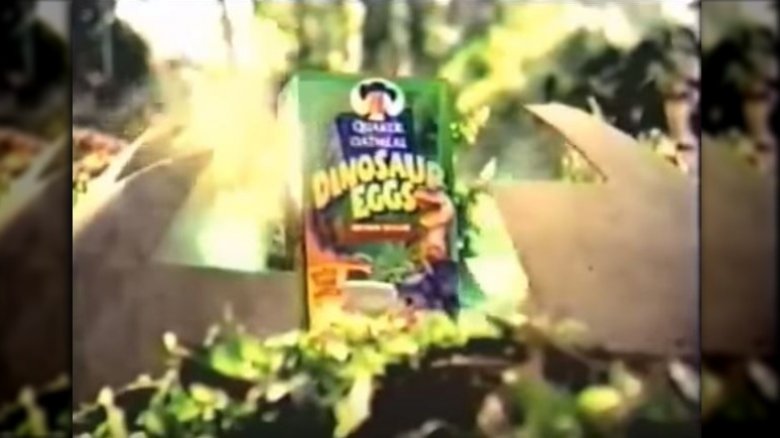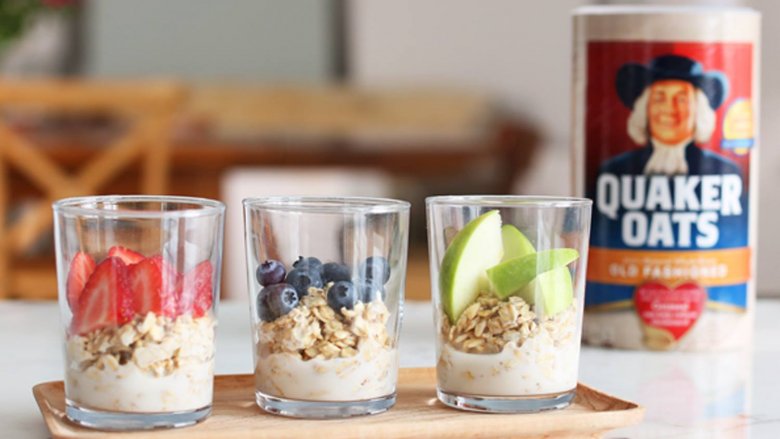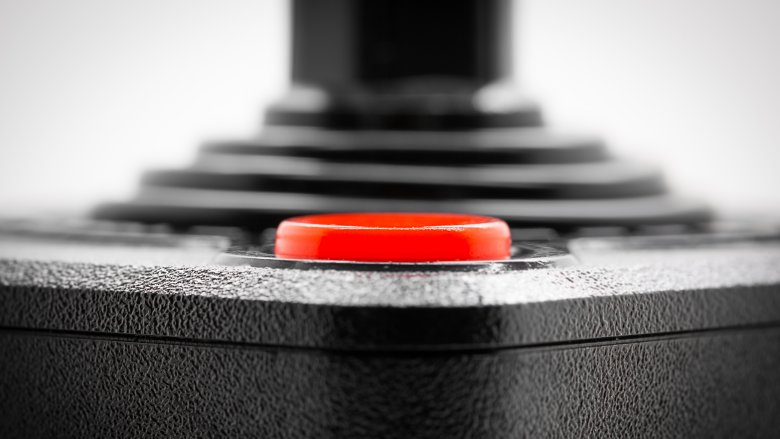The Untold Truth Of Quaker Oats
How many times have you started your day with a piping hot bowl of Quaker oatmeal? Or how about Life Cereal? There's nothing like the comforting taste of nostalgia first thing in the morning, right? Quaker Oats and their family of products have been a part of our everyday life for decades. In fact, chances are pretty good that you probably have one of those distinctive, round cartons in your cupboards right now — maybe even a few empty ones tucked into a closet for a future craft project. But what you might not know is that every single time you make a bowl of their tasty oatmeal, you're taking part in a long and storied history that... well, there are times it gets downright bizarre. Believe it or not, there's nothing bland about Quaker Oats or where they come from. Here is the untold truth of an old school breakfast favorite.
The Quaker Oats man isn't a real person
There's something undeniably wholesome about Quaker Oats. Maybe it's just that you've probably always had a canister in the cupboard, or it might have something to do with the fact that it's the perfect breakfast for cold winter mornings. It's comfort food to the max, and that might have to do with the smiling, friendly-looking man on the logo. You can just see him serving up a piping hot bowl of oatmeal to his kids, and he's about as far from Tony the Tiger as you can get.
But who is he? There's a long-standing belief that he's the founder of Pennsylvania, William Penn. It's possible — U.S. history says Penn became a Quaker when he was 22 — but according to Quaker Oats lore, it's not him. They say that he's not an actual person, but that he was chosen as a representative of the Quakers. Why the Quakers? Because they embody the same values Quaker Oats wanted to be associated with: "honesty, integrity, purity and strength."
He does have a name, though, and according to The Wall Street Journal, company insiders call him Larry. So, there you have it. While some company mascots are very real — like Duncan Hines — Larry can continue to exist just as the perfect ideal of the Quaker faith.
The Quaker Oats man has changed quite a bit over the years
Larry the Quaker Oats Man was first developed in 1877, and according to Business Insider's walk down memory lane, he's had a surprising number of looks over the years. The familiar logo — just the Quaker Man's head — didn't show up until 1956, and for a short time, he was black-and-white. He got a color treatment in 1957, and if the iconic drawing looks a little familiar, there's a good reason for that. It was done by Haddon Sundblom, who also did the Santa Claus illustrations for Coca-Cola.
He got a complete overhaul in the 1970s, to a blue-and-white logo that, frankly, is very 70s. This look didn't last long, but it was only in 2007 we got the logo you're familiar with today... for the most part. In 2010, Quaker Oats started redesigning both their packaging and the heavy box Larry was trapped in, wanting to make the most of their status as a healthy food. And in 2012, Larry himself got a makeover. Did you notice? According to their design firm's Michael Connors (via AdWeek), "We took about five pounds off him."
Quaker Oats was essentially selling horse food and marketing it for people
Quaker Oats was trademarked in 1877, and the next two decades saw three competing oat-milling companies come together to form a single conglomerate. After years of in-fighting, Quaker Oats was finally formed in 1901. It was an incredible thing, because the entire industry was truly built on their founders' ability to convince the public they should be eating livestock feed.
Ferdinand Schumacher was one of those founders, and he immigrated to the United States from Germany in 1851. Back in his native country — and most of Europe — everyone was familiar with the idea of eating oats and porridge. When he came to the US, he found oats were feed for horses... and people certainly didn't want to eat that.
Schumacher got creative, and started selling glass jars packed with cubed oats. The convenience factor got people interested, and Schumacher went on to figure out a way to make them cook faster. He created rolled oats, and this was about the time the Civil War was kicking off. The military needed a cheap way to feed a lot of people, and soldiers across the country were introduced to the idea they could eat their horses' oats.
Quaker Oats created the way we package and market foods
From the very start, Quaker Oats has been built by its marketing — perhaps more so than most companies. Not only did they have to convince people to eat oats in the first place, but they had to get them to prepare it in a way that would taste good and keep them coming back. Those challenges got Henry Crowell — one of the original founders of Quaker Oats — thinking (via The Gazette). He decided on packaging his oats in the round, colorful containers we still see today. That got people noticing his oats... but making them?
It's hard to know if Quaker Oats knew what a revolutionary idea they had when they printed a recipe right on the box. We see it all the time now, thanks to their 1891 idea. That was about the same time they introduced two more brilliant marketing techniques, too — the trial-size sample, and the prize in the box. In 1891, consumers could find a piece of china dishware in their oat boxes, and while that's quite a bit different from the toys we usually expect in today's cereal, they can take credit for this idea, too.
Quaker Oats once fed kids radioactive oatmeal to see what would happen
In 1949, boys living at the Fernald State School — a state-run school for abandoned boys — were invited to join the Science Club. According to the Smithsonian, they were given all kinds of incentives to join, like hearty breakfasts (starvation was a frequent punishment), and trips to baseball games. But there was a catch.
Quaker Oats had teamed up with researchers from MIT for three experiments involving 74 boys between the ages of 10 and 17. For one, the boys were given breakfasts of Quaker Oats that contained radioactive calcium and iron.
The reasoning was twofold. Researchers wanted to know what kind of effects radioactivity had on the human body, as more people were being exposed to it than ever before. Quaker Oats wanted in on the study because they saw it as a way to prove their oatmeal was just as healthy as their Cream of Wheat competitors. They got their medical testing done, MIT got their results... it was a win-win. Sort of. A 1995 lawsuit found that while the radioactivity hadn't been enough to cause lasting damage, the boys involved were entitled to a settlement and apology.
Quaker Oats was found to contain weed-killer
In 2018, the Environmental Working Group — the same group that releases the Dirty Dozen list — tested multiple breakfast foods for the presence of glyphosate. That's stuff found in weed-killer, and specifically, in Roundup. When they released their results, they said (via Business Insider) that among the foods that tested positive for the chemical were Quaker Oats.
Other breakfast foods were also found to contain the weed-killer chemical, like Cheerios and Lucky Charms. In fact, 31 of the 45 samples of oats tested were deemed to be below their safety criteria, and when they went back and tested more samples of both Quaker Oats and Cheerios, they found that all but two (of 28) samples were deemed "harmful."
But, are they? There's a heated debate going in the scientific community about just how dangerous glyphosate is. Some — like the World Health Organization's International Program on Chemical Safety — say it's not a concern at all. On the other hand, the WHO's International Agency for Research on Cancer says it's possibly carcinogenic, so clearly, more research needs to be done.
A week prior to the results going public, a California judge ruled in favor of a man who claimed repeated exposure to Roundup caused his terminal cancer. That's not good publicity, and Fast Company says Quaker Oats did respond to the findings with this (partial) statement: "Any levels of glyphosate that may remain are significantly below any regulatory limits and ... [are] safe for human consumption."
Quaker Oats financed Willy Wonka & the Chocolate Factory
Gene Wilder's Willy Wonka & the Chocolate Factory is one of those iconic movies of any childhood... even if it did give you nightmares. According to Brian Cronin (via Huffington Post) you can thank Quaker Oats for getting the movie made, and for giving you those bad dreams.
Let's start with the title. Ever wonder why it's not Charlie and the Chocolate Factory, like the book? It's because Quaker Oats wanted to make sure the name "Willy Wonka" was front and center... so they could market the heck out of it.
The movie was originally pitched as a pretty sweet deal for Quaker Oats. They would finance the movie, a major film studio would release it, then they would create their own candies based on the ones in the film... and that's exactly what happened. The Willy Wonka line of candy was launched alongside the movie, but there were difficulties. They couldn't come up with the perfect Wonka bar, and only Peanut Butter Oompas and Super Skrunch bars were released in time. Wonka Bars came a few years later, and Quaker Oats sold that division to Nestle in 1988.
Quaker Oats was the third largest beverage producer in North America
When you think of Quaker Oats, you think of their oats and their cereal products, right? According to Marketing Lens, though, they've always dabbled in other products like pet food and even clothing. When they bought Snapple in 1994, the acquisition made them the third largest beverage company on the continent (behind Coca-Cola and PepsiCo).
The partnership didn't last, and the LA Times called it "one of the worst flops in corporate-merger history." Quaker Oats only owned Snapple for 27 months, selling it for $300 million after making a $1.7 billion investment in the drinks company. There's an almost infinite number of factors that come into play in an acquisition like this, but the LA Times blamed the disastrous merger on the company's failure to understand Snapple's strengths along with stiff competition from the other beverage distributors.
Quaker Oats partnered with the FDA to get their oatmeal special labels
Oatmeal has come a long way as far as reputation is concerned. It's the breakfast food of the health-conscious today, and that's in large part due to some official FDA claims Quaker Oats made possible for everyone.
Prior to 1997, foods weren't allowed to advertise claims about specific benefits. They could say they were low-fat, for example, but they couldn't say they helped manage cholesterol. That changed after Quaker Oats reached out to the FDA and requested permission to advertise the fact that including oats in a balanced, low-fat diet would help reduce the risk of heart disease. According to CNN, the move changed the way we advertise the health claims on food, and the change came in spite of protests from some groups claiming consumers would be mislead into thinking certain foods were "magic" foods. The FDA acknowledged that in their official rules and regulations, stating that just wasn't the case and by 1999, the Chicago Tribune was reporting Quaker Oats was seeing record sales.
Remember this classic Quaker Oats commercial?
You've seen the Life Cereal commercials where we learn "Mikey likes it." According to Tim Clark — who inspired his father to write the "Three Brothers" commercial — the idea of a "slice-of-life commercial was nothing short of career suicide at the time (via Forbes). They had been told to come up with something completely different for the cereal, and they were given a stack of pitched ads representing everything Quaker Oats didn't want. Finally, Dave Clark pitched an idea his superiors said was too boring, basing it on his family's breakfast struggles.
Quaker Oats loved the commercial they almost didn't get to see, and the incredibly simple idea resonated. It became a part of pop culture and television history... in spite of the naysayers. "Mikey" was almost "Tim", and while we'll never know if that would have seen the same success, we do know the urban legends about little Mikey's fate just aren't true. According to NewsDay, John Gilchrist had dabbled in acting before settling into a career in media sales. And yes, he still eats Life Cereal.
The Quaker Oats heir protested US involvement in WWII
Robert D. Stuart, Jr. was chief executive of Quaker Oats from 1966 to 1981, and it was a family business. The Stuarts were one of the founders of the company, but when he died in 2014, The New York Times' obituary highlighted some controversial things.
In 1940, Stuart helped found America First, one of the largest anti-war groups in the country's history. According to Stuart, his views came from the idea "[...] that the US didn't accomplish much in committing troops to the First World War," and they were all about keeping America out of the second. The group dissolved after Pearl Harbor, Stuart enlisted in the Army, and served in Europe. Later, Stuart would be described more as an "internationalist" than an isolationist, and after he retired from Quaker Oats he was appointed as an ambassador to Norway.
The Quaker Oats Company took a different — and surprising — role in the war effort. The QO Ordnance Company was a subsidiary of Quaker Oats, and they oversaw ammunition plants in Nebraska. According to the US Army Corps of Engineers, they manufactured bombs, artillery, and ammunition ultimately sent to the Pacific theater.
Remember Quaker Oats' Dinosaur Eggs oatmeal?
Now, how about a trip down memory lane? In the 1990s, Quaker Oats decided to make a serious push at getting kids interested in eating oatmeal. They had an uphill battle ahead of them, and according to Bustle, they started with their Dinosaur Eggs oatmeal. It wasn't just breakfast, it was an interactive breakfast... sort of. Kids could watch the "dinosaur eggs" in their oatmeal hatch into little candy pieces, and according to Ideas To Go, the firm who acted as a consultant, they were a massive hit and ended up doubling their project sales goals.
Two other kid-friendly oatmeals followed, Treasure Hunt and Sea Adventures. They've gone the way of the dodo, but you can still find Dinosaur Eggs. How about it, do you remember eating those as you watched your Saturday Morning Cartoons?
How healthy are Quaker Oats... really?
There are two different kinds of oatmeal: instant, and the kind that takes next to forever to cook. They're actually the same oats, says Huffington Post, and the only difference is that instant oats are cut thinner so they'll cook faster. And on their own, oats are definitely a smart thing to add to your diet. Healthline says they've been found to be high in vital nutrients, minerals, fiber, and antioxidants, help manage cholesterol, improve blood sugar, and help with weight loss because they're so filling.
So that cannister of Quaker Oats is going to be a great choice, but less great are those instant packets that come in all kinds of flavors. Most of those have a ton of added sugar, and even ones that sound like they should be healthy can come with some not-so-great ingredients. Take Quaker Oats Apple and Cranberries Instant Oatmeal. Sounds great, right? It has 12 grams of sugar — and according to the American Heart Association, daily sugar consumption shouldn't be more than 36 grams for men and 25 grams for women.
Bottom line? If you're looking to grab some Quaker Oats for a super healthy breakfast, get the plain ones and dress it up yourself. It's easy to do!
Quaker Oats once made video games
So we know Quaker Oats makes all kinds of oatmeal, but here's a fun fact you can pull out at parties the next time someone starts sharing some trivia: they also made video games.
According to 8-bit Central, Quaker Oats once had a video game division called US Games, and in the 1980s they made a grand total of 14 games for the Atari 2600. The company was only around for about a year, and that's not really surprising — their games were terrible on an epic scale.
Take Sneak'n Peek. Released in 1982, it was (via Old School Gamer), a super bizarre answer to a question literally no one had ever asked: "How can I play hide-and-seek without getting up off the couch?" The game featured a house with a yard and three rooms, and a total of 20 different places you could pick to hide. In the one-player game, you played against the computer. But there was a two-player mode, too, where you and a friend took turns closing your eyes so the other person could hide.
Bizarre? Absolutely, and it's no wonder their foray into gaming only lasted for such a short time. Other titles included (via AtariAge) names like Eggomania, Picnic, Piece o' Cake, and Name This Game, and it just goes to show that not every business venture is a good one.
